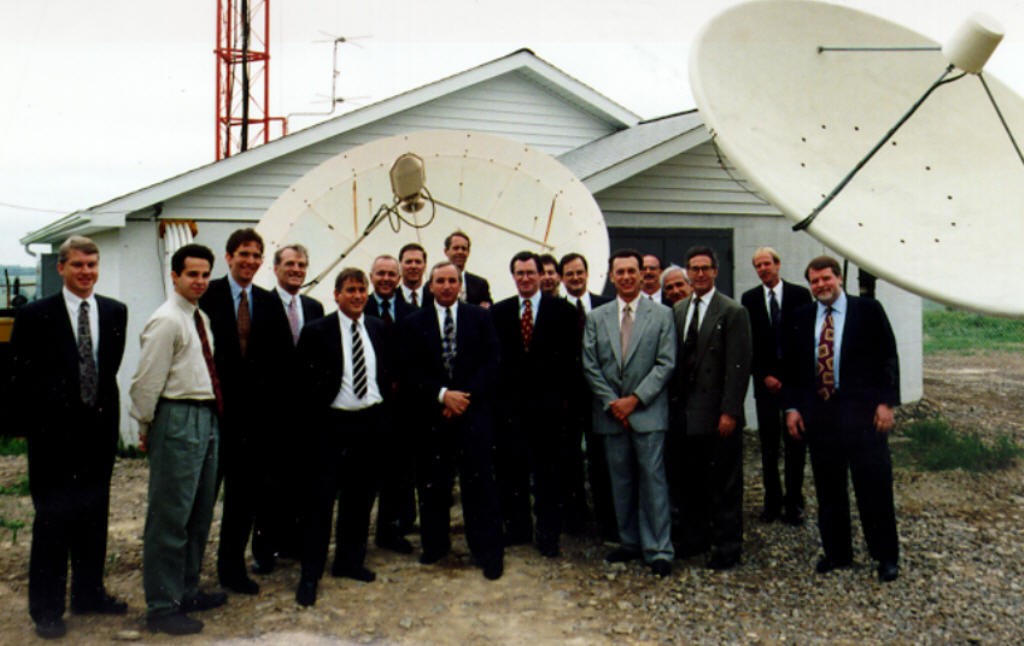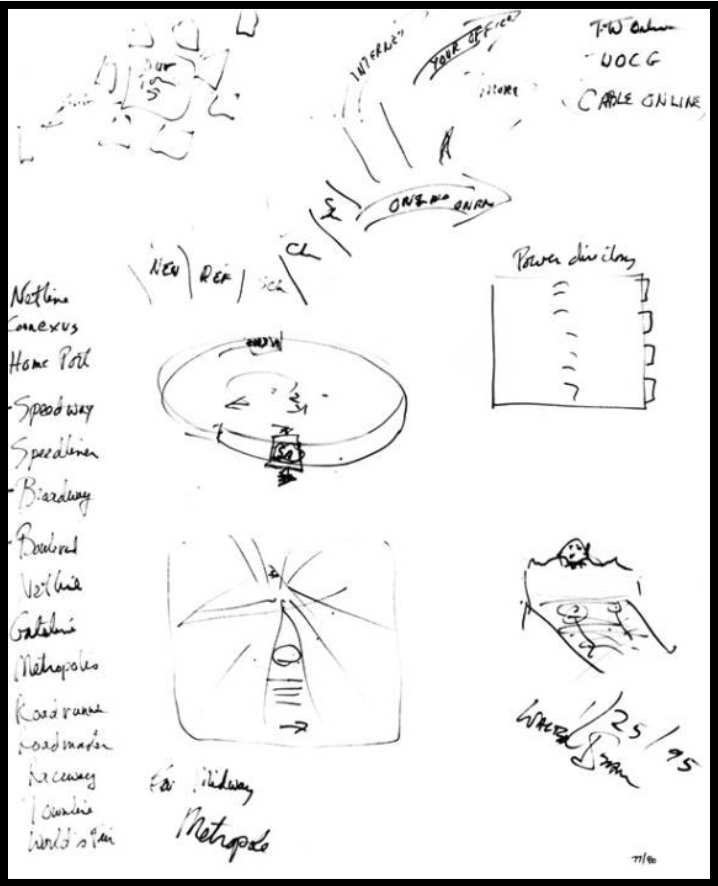How Mario Vecchi Created The First Venezuelan Computer and Became a Star of STEM in America
Mario Vecchi is not only the most cited Venezuelan -and perhaps Latin American- scientist: he is also a star in STEM America and the creator of the first Venezuelan computer.


At the end of May 2021, Mario Pietro Vecchi –an electrical engineer and computer scientist from Caracas– retired from his position as Chief Technology Officer in PBS. Two months later, Isabel Lara –a Literature graduate from the Andrés Bello Catholic University– became NPR’s Chief Communications Officer. Both, despite the different backgrounds and generations, are part of the growing success of Venezuela’s diaspora in the US.
But Vecchi’s story –which I’ve researched as part of my VES Project, on STEM migration in and out of Venezuela– is not simply one of corporate success. It’s the story of an academic maverick and of both the failure of Venezuela’s homegrown computer industry and the success of its diaspora. Vecchi, in fact, was born in Caracas to Italian parents in 1948 and has lived in the United States since 1986.
Vecchi graduated from Cornell University in 1969 but returned to Venezuela where Italian-Venezuelan electrical engineer Roberto Cesare Callarotti –who had graduated from UT Austin and had a Ph.D. from MIT– had started a talent recruitment program for engineers at the Venezuelan Institute of Scientific Research (IVIC), where he was head of the Engineering Center. Vecchi, as well as other scientists that would later succeed in the U.S., were among the people recruited by Callarotti.
In fact, with IVIC’s financial support, Vecchi then went on to MIT to research the temperature dependence of the direct energy gap of bismuth and the electronic properties of the group V semimetals under the guidance of the great American physicist Mildred Spiewak Dresselhaus (1930-2017), known as the “Queen of Carbon Science”. This research work helped him earn an M.Sc. (1972) and a Ph.D. (1975) from MIT, both in Electrical Engineering.
Vecchi, the most cited Venezuelan scientist
But Vecchi returned to Venezuela once again, where he joined the low-temperature research laboratory at IVIC and began collaborating with physicist Romer Navas (1932-1999) and others on ultrasound absorption in dielectric materials. Later, he became a Senior Research Fellow (Investigador Titular) and head of the Semiconductor Laboratory at IVIC’s Physics Center, where he worked on the physics of semiconductor materials and ITSC (integrated tandem solar cells) devices.

Over time, one of his research publications had an outstanding outcome. In 1983, during his sabbatical year, Mario Vecchi joined the IBM Research Center in Yorktown Heights, New York, as a visiting scientist. Alongside Edward Scott Kirkpatrick and Charles Daniel Gelatt Jr., he coauthored the paper Optimization by Simulated Annealing (OSA) which was published in the journal Science. Simulated annealing is a stochastic optimization procedure, a method based on statistical mechanics to find the global minimum of a given function (optimization). This paper currently figures among the most highly cited papers of all time. In 2014, in The Top 100 Papers article published by Nature, it was ranked 86th. According to Google Scholar, this paper has been cited 57,470 times; and 32,355 times as stated by Web of Science. To my knowledge, it is the most cited article by any Venezuelan or Latin American person in any area of scientific knowledge.
And yet, Vecchi returned to Venezuela one more time. And found, albeit fleeting, a budding computer industry.
Xynertek: the first Venezuelan microcomputer
I know it might seem difficult for people today to believe that Venezuela once had such technological capacities. This is a story worth telling in full detail; however, here I can only give you a glimpse of the Venezuelan technological world of the early 1980s. Partly thanks to the initiative of Roberto Callarotti, Helenio Arqué Almaraz (1932-2000), chief of IVIC’s Electronic Department since 1971, and others, Venezuela had then set up in place almost all the foundations to create an electronics industry of microprocessors and electronic devices.
Since the early 1970s at the Universidad de Los Andes (ULA), both the Laboratory for the Study of the Properties of Solids at Low Temperatures and the Laboratory for Characterization and Growth of Crystals did semiconductor research. In fact, under the leadership of Indian-Venezuelan professor Syed Mohammad Wasim, both came together in 1983 to form the Center for Semiconductor Research (or Centro de Estudio de Semiconductores in Spanish) at ULA.
Moreover, in 1978, Punjabi physics professor Amar Singh created the Universidad de Oriente (UDO)’s Semiconductor Devices Laboratory in Cumaná. Meanwhile in Caracas, a few startup tech companies were funded, such as Aeti, Mataplex, Avtek, EYT (Electrónica y Telecomunicaciones) C.A., Fonolab, and Microtel (to manufacture telephone exchanges).

This is the ecosystem Vecchi found when he returned home from his sabbatical at IBM. In fact, while accepting the role of Chairman of the Electrical Engineering Department at the Universidad Metropolitana in Caracas, he soon left IVIC to start Xynertek C.A., a Venezuelan microcomputer design and manufacturing company. To ensure considerable technological autonomy, with financing from the Technological Innovation Development Fund or Fondo de Desarrollo de Innovación Tecnológica (FINTEC), Xynertek ddeveloped the central processing unit and the BIOS (basic input output system) as a guarantee to overcome the fundamental difficulty of establishing considerable technological autonomy.
Xynertek was the first computer made in Venezuela.
But, on February 18, 1983, the Venezuelan currency crashed. Henceforth, within a few years, the real possibility of truly developing an electronics industry in the country disappeared. Xynertek and a few other entrepreneurial initiatives folded, and many Venezuelan scientists and engineers soon began to look for new horizons in other countries.
In fact, in 2003, Venezuelan sociologist Iván de la Vega carried out a study on intellectual emigration from Venezuela. Using National Science Foundation (NSF) data, he estimated that approximately 9,000 Venezuelan scientists and engineers were then living in the United States. Vecchi among them.
A historical napkin

In 1986, Mario Vecchi moved to Morristown, New Jersey. As an immigrant in the United States, he developed a brilliant career in the world of computers, telecommunications, and public television. Between 1986 and 1993 he worked as director of Applied Research at BellCore, a company that later became Telcordia Technologies, and today is part of Ericsson as Iconectiv. At BellCore, Mario Vecchi carried out pioneering work in the development of broadband communication technologies. During this time, he coauthored several papers.
For several months, approximately from October 1993 to March 1994, Mario Vecchi served as Vice-President of Network Architecture Design and Development and was involved in a project to define the DOCSIS (Data Over Cable Service Interface Specification) standard.
But something else was happening in 1994: people are now dialing up to connect to the Internet. And so, some engineers –like Vecchi– are thinking about Building The Data High Way: broadband. Mario Vecchi was one of the technical visionaries and a main actor in this important moment in the history of telecommunications in America.
In 1994, Vecchi became Vice President of Network Engineering at Time Warner Cable in Englewood, Colorado. From there, he went on to co-found and become the Chief Technology Officer (CTO) of Road Runner Group in 1995, a Time Warner Cable company that pioneered cable modem broadband technology and online service. Vecchi’s role would be crucial in trying out broadband in many American cities.
In fact, Jeff Simmermon recalls in the now-deleted 2013 blog post “High-Speed Broadband on the Back of a Napkin“, in January 1995 Time Warner engineers dined together “to figure out how to get Time Warner Cable into the Internet access business.” On a napkin, Mario Vecchi sketched his idea for a telecommunication architecture that could make it possible. As the napkin shows, Vecchi wrote a list of names for the new company –including Road Runner– and two people in bed enjoying the service.
Vecchi’s adventure in corporate America went on. In September 1998, Mario Vecchi began working for America Online (AOL) as vice president of broadband development. In this executive position, he was responsible for managing AOL’s international activities, located mainly in the United States, Ireland, India, and China, related to software development, network operations, new Internet access technologies (broadband, wireless, home networks), and support and financial systems, and was responsible for personnel of nearly 1,000 engineers and support staff.
And, after a decade in AOL and a brief series of enterprises in Florida and Puerto Rico, Vecchi became PBS’ Chief Technology Officer, where he oversaw media management, including web and new media applications/systems, distribution operations and engineering, interconnection engineering, and information technology. Vecchi “guided PBS and its member stations into the digital world”, the company said once he stepped down, “As the architect of PBS’s technology strategy and planning, Vecchi and his team have strengthened the infrastructure that enables PBS and member stations to connect with the American public, including the successful rollout of Interconnection (sIX).”
Caracas Chronicles is 100% reader-supported.
We’ve been able to hang on for 22 years in one of the craziest media landscapes in the world. We’ve seen different media outlets in Venezuela (and abroad) closing shop, something we’re looking to avoid at all costs. Your collaboration goes a long way in helping us weather the storm.
Donate




